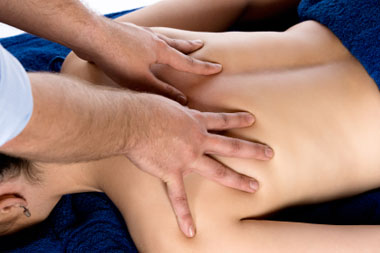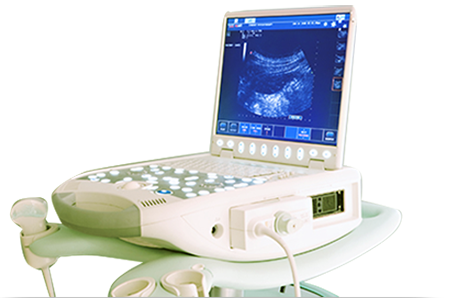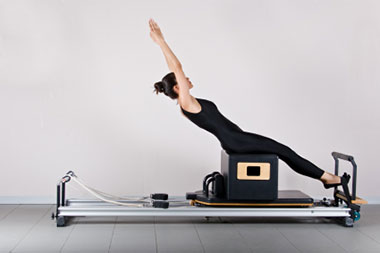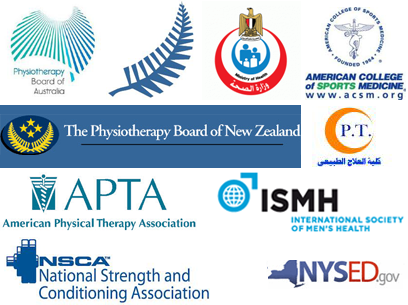Musculoskeletal Rehabilitation & Injury Prevention

Whether you are suffering from acute or chronic injury
or following surgery, the rehabilitation process forms an
integral part of your recovery. Your rehabilitation is
important not just to recover from your injury but also to
help stop it from returning in the future.
The assessment and rehabilitation process depends upon
your level of activity and sport. It could be as simple as
asking you to touch your toes but it could include asking
you to perform some jumps or running on the treadmill.
One of the most important parts of the rehabilitation
process is that it is highly specific to you and your
personal goals.
Cancer Care Physical Therapy

Maintaining strength during cancer treatments helps to
prevent or reduce the risk of complications (such as
infection) and enhances the quality of life.
Cancer and its treatment can cause debilitating side
effects for patients, compromising their function and
quality of life. Fortunately, research has shown that
physical therapy during and after cancer treatment can help
speed functional recovery, boost immune response, reduce
fatigue and reduce risk of complications for people of any
age.
In conjunction with your medical team, the physical
therapist works with patients and caregivers to maximize
their physical abilities and comfort levels to ensure the
most effective recovery. Your cancer care Physical
Therapist can help maximize strength and function during
and after cancer treatment by addressing each of these
issues through hands-on therapy, education and exercise to
increase your function and independence.
Pelvic Health and Wellness for Both Men and Women

What Core Basics Physical Therapy and Wellness
offers?
We offer patients a comprehensive line of services and
individualized packages geared toward treating and bringing
comfort to men and women with pelvic health diagnoses. We
provide hope for conditions that are often seen as
untreatable by practicing whole-person health with a focus
on the mind, body and spirit.
Research documents that a significant number of people
with one or combination of pelvic floor symptoms may feel
too embarrassed to discuss their sexual, urinary and bowel
issues with their health care practitioners, thinking that
they have to “live with it: or their symptoms are a “normal
part of aging” . In turn, the health care practitioners did
not ask the specific questions to discover if there was a
pelvic floor problem.
Many patients with pelvic floor
dysfunction have consulted a large number of physicians in
a variety of specialities, without getting relief or a
clear understanding of their condition. This is due to the
lack of medical schooling teaching the future doctors how
dysfunctional muscles, connective tissues and joints can
cause pain and disruption of pelvic floor function. Only in
the recent 10 years have physical therapists, specializing
in pelvic floor dysfunction, noted that tight, weak,
spasmed, incoordinated muscles of the pelvic floor, lower
abdominals, lumbar spine and hips were the primary cause
for a wide range of pelvic floor symptoms.
Real-Time Ultrasound in Rehabilitation

Real-Time Ultrasound (RTUS) is an emerging imaging modality in Physical Therapy. Rehabilitation of skeletal muscles is made easier with ultrasound imaging which provides an instant snapshot of your abdominal, back and pelvic floor muscles enabling you to activate them correctly, which is considered the base of any effective rehabilitation program.
Real-Time Ultrasound allows both the Physical Therapist and the patient to see the muscles while they are working in real time. This immediate visual feedback improves ability to learn to control the stabilizing muscles, speeding up recovery and producing a longer lasting outcome.
Using the Real-Time Ultrasound, your stabilizing muscle function will be assessed and you will be shown any deficiencies, if present. You will be taught the correct method and will be able to see the improvement occur in real time.
Ergonomics Assessment

Ergonomics considers the relationship between the worker, the actions or tasks inherent to that activity (job, school, play), and the environment in which the work is performed. When there is a mismatch between the physical requirements of the job and the physical capacity of the worker, musculoskeletal disorders may result.
Ergonomics is the practice of designing equipment and work tasks to conform to the capacity of the worker. It provides a means of adjusting the work environment and work practices to prevent injuries before they occur.
Certified Ergonomic Specialists evaluate the client's work or home environment.
The assessment is performed by a licensed Ergonomics Specialist physical therapist who performs the following:
- Suggests options for solving ergonomic safety issues
- Assists in establishing or improving work- site injury and illness prevention programs
- Helps employers identify hazards in the workplace
- Works with employers to identify and develop health and training for employees
- Provides employers with written reports to summarize findings
Environmental factors can often be accommodated to a client's temporary or long-term limitations. The ergonomic assessment may involve both remediation or prevention of further injury. On-the-job injuries are often costly to employees, employers, and insurers. Activities to promote prevention may represent a sound investment.
Common Areas for evaluation include
- Work site analysis
- Desk height
- Chair design
- Location of computer station
- Effectiveness of work area for temperature, height, lighting
- Incorporation of pacing techniques to reduce incidence of work-related injuries
- Prescription for adapted aids
Functional Training and core strengthening

Functional training has its origins in rehabilitation. Physical Therapists often use this approach to retrain patients with movement disorders.
Interventions are designed to incorporate task and context specific practice in areas meaningful to each patient, with an overall goal of functional independence.
Functional training attempts to adapt or develop exercises which allow individuals to perform the activities of daily life with more ease and without injuries.
Functional training involves mainly weight bearing activities targeted at core muscles of the abdomen and lower back. Most fitness facilities have a variety of weight training machines, which target and isolate specific muscles. As a result the movements do not necessarily bear any relationship to the movements people make in their regular activities or sports.
Rehabilitative Pilates and Yoga

A perfect complement to your rehab for any injury is Rehabilitative Pilates & Yoga Therapy. At Core Basics Physical Therapy and Wellness, we work daily with clients who are recovering from various injuries. The combination of the two is an excellent tool to re-educate muscle imbalances, re-train dysfunctional movement patterns and correct biomechanical problems. Working with your doctors Rehabilitative Pilates and Yoga Therapy gives you the best opportunity for functional recovery.
Pilates and Yoga Based Physical Therapy at Core Basics PT is an approach to healing grounded in the moving body. We assess and treat the whole person - not just an injury or symptom - through Pilates exercises and traditional physical therapy methods.
At Core basics PT, we are particularly adept at identifying and correcting problematic postural and movement patterns that can cause you pain. We believe that you can feel better when you move better.










